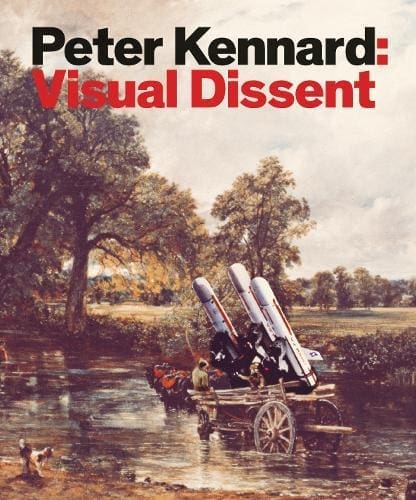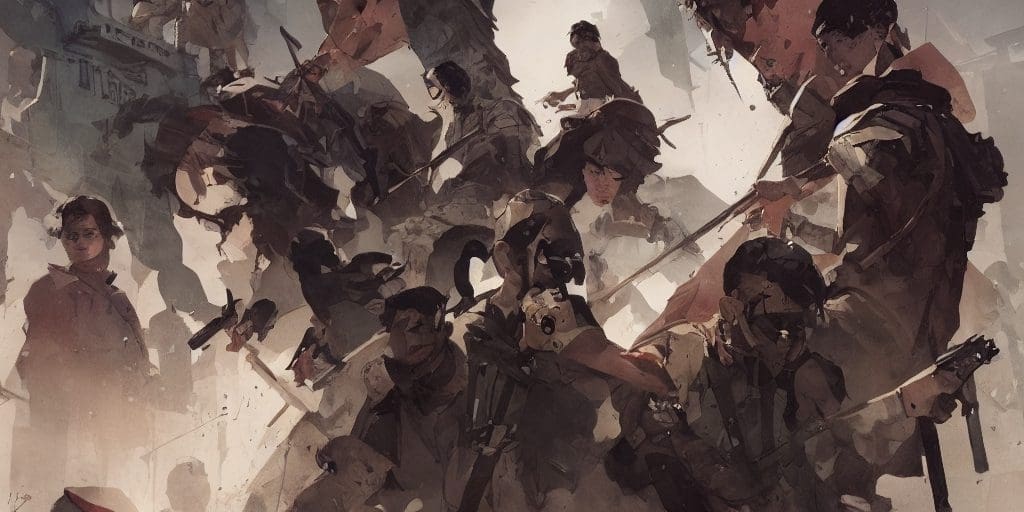Evolution of Art and Design Styles Since 1960
A Journey Through Creativity, Art and Design
The evolution of art and design since 1960 has been nothing short of a whirlwind of innovation, rebellion, and transformation. It’s a journey that has taken us from the bold, abstract strokes of the mid-20th century to the digital realms of the 21st century. Over these six decades, art and design have reflected and sometimes shaped the cultural, political, and technological changes that have defined our world. Let’s explore the pivotal moments, influential movements, and enduring legacies of this remarkable period.
Table of Contents
*All Book Images Open a New tab to our Bookshop
**If you buy books linked to our site, we get 10% commission from Bookshop.org, whose fees support independent bookshops.
The 1960s: A Decade of Art Rebellion and Experimentation
The 1960s kicked off with a resounding boom in art and design. As society grappled with civil rights movements, the Vietnam War, and a rapidly changing world, artists and designers responded with rebellion and experimentation.
Pop Art, spearheaded by luminaries like Andy Warhol and Roy Lichtenstein, took everyday objects and transformed them into vibrant, iconic artworks. This movement challenged traditional notions of art by embracing the mundane and mass-produced, effectively blurring the line between high and low culture.
Meanwhile, the counterculture movement gave rise to psychedelic art, embracing bold colours, intricate patterns, and a sense of transcendence. The likes of Peter Max and Wes Wilson created visuals that mirrored the social upheaval and consciousness expansion of the era.
The 1970s: Minimalism and Postmodernism
In the 1970s, art and design took a turn toward minimalism and postmodernism. Minimalism sought to simplify forms and eliminate excess, with artists like Donald Judd and Dan Flavin exploring the beauty of pure geometric shapes and industrial materials.
Postmodernism, on the other hand, rejected the idea of a single, objective truth. Artists like Cindy Sherman and Barbara Kruger used photography and mixed media to deconstruct established narratives and challenge societal norms. In design, this era gave rise to the Memphis Group, which embraced bold colours and whimsical shapes.
The 1980s: The Birth of Street Art and the Digital Age
The 1980s brought us the birth of street art, epitomized by Jean-Michel Basquiat and Keith Haring. These artists took their work to the streets, using graffiti and murals as a canvas for social commentary and self-expression. Street art challenged the traditional art world and brought art to the masses.
Simultaneously, the advent of the personal computer ushered in the digital age. Graphic design and digital art became prominent, with artists like David Carson and John Maeda pushing the boundaries of what was possible with pixels and screens. This era also saw the birth of video art, as artists like Nam June Paik experimented with the fusion of technology and art.
The 1990s: Globalization and Diversity
The 1990s were marked by globalization, and this had a profound impact on art and design. Artists from diverse backgrounds, such as Yayoi Kusama and Takashi Murakami from Japan, gained international recognition. Their work was characterized by vibrant colours, playful aesthetics, and a blend of traditional and contemporary influences.
Design-wise, this period saw the rise of user-centric design thinking, with companies like Apple leading the way. The emphasis on user experience and sleek, user-friendly interfaces became hallmarks of this era.
The 2000s and Beyond: The Digital Revolution
As we entered the 21st century, the digital revolution transformed the art and design landscape even further. Digital art, virtual reality, and augmented reality became prominent mediums, with artists like Olafur Eliasson and Marina Abramović pushing boundaries in immersive experiences.
The internet brought about a democratization of art and design, with platforms like Instagram allowing artists to showcase their work to a global audience. Social media also played a significant role in shaping artistic trends and aesthetics, with trends often going viral.
The Importance of Art and Design Since 1960
Why is the evolution of art and design styles since 1960 so important? It’s because these styles have not just mirrored the cultural, political, and technological changes of their respective eras but have often played a pivotal role in shaping them.

Art and design have the power to challenge norms, provoke thought, and inspire change. Movements like Pop Art, street art, and postmodernism have confronted societal issues and raised questions about the status quo. They have offered a platform for marginalized voices and sparked conversations about identity, consumerism, and the environment.
Moreover, art and design have a profound impact on our daily lives. They influence the products we use, the spaces we inhabit, and the messages we receive. User-centric design thinking, for instance, has made technology more accessible and user-friendly, enhancing our daily interactions with digital devices.
Solutions for the Challenges Ahead
As we move forward into an increasingly digital and interconnected world, the art and design communities face both opportunities and challenges. Here are a few key considerations:
Digital Literacy: With the prevalence of digital art and design, it’s crucial to promote digital literacy. Education and awareness programs can help individuals appreciate and engage with digital art and design, ensuring they don’t get left behind in the digital age.
Inclusivity: The art and design world must continue to promote inclusivity and diversity. This includes supporting underrepresented artists and designers, fostering cross-cultural collaborations, and breaking down barriers to entry.
Sustainability: In an era of environmental concerns, sustainable practices should be at the forefront of art and design. This includes using eco-friendly materials, minimizing waste, and addressing the environmental impact of art and design processes.
Preserving Analog Art: While digital art has surged in popularity, it’s important to preserve and appreciate analog art forms. Museums, galleries, and collectors play a crucial role in ensuring that traditional art forms continue to thrive.
The evolution of art and design styles since 1960 is a testament to human creativity, innovation, and adaptability. It reflects the changing tides of society and technology, offering a lens through which we can better understand our world. As we navigate the challenges and opportunities of the 21st century, art and design will continue to be a driving force in shaping our future. Embracing digital innovation, promoting inclusivity, and championing sustainability are just a few steps we can take to ensure that art and design remain vibrant, relevant, and impactful for generations to come.




























Leave a Comment